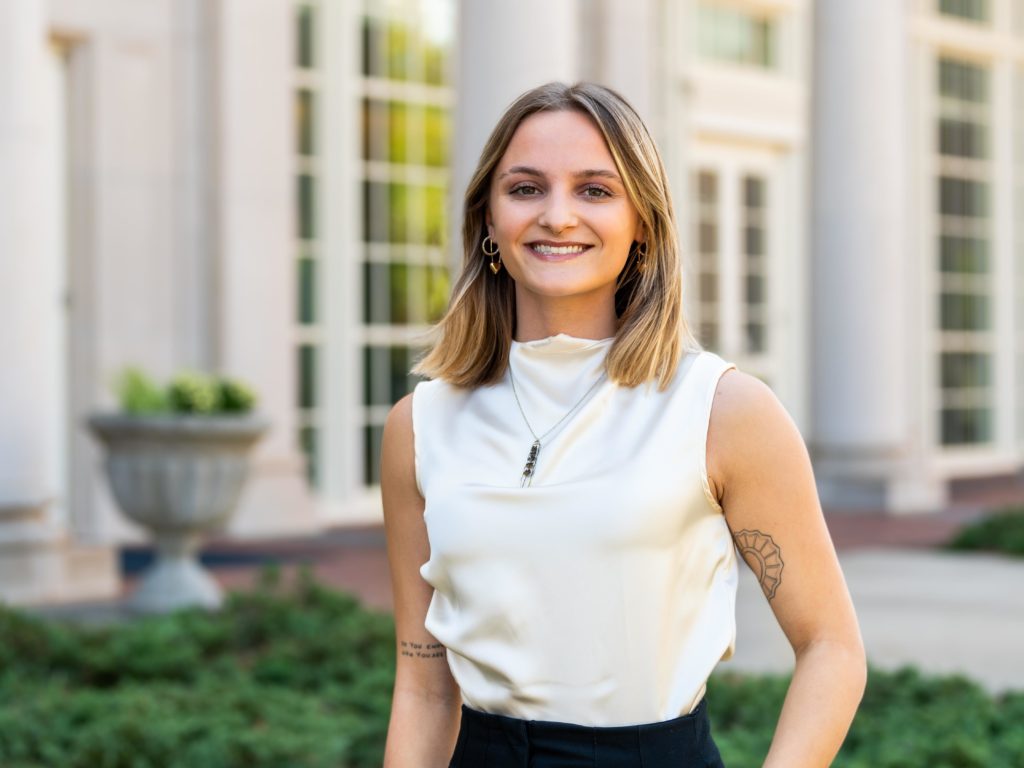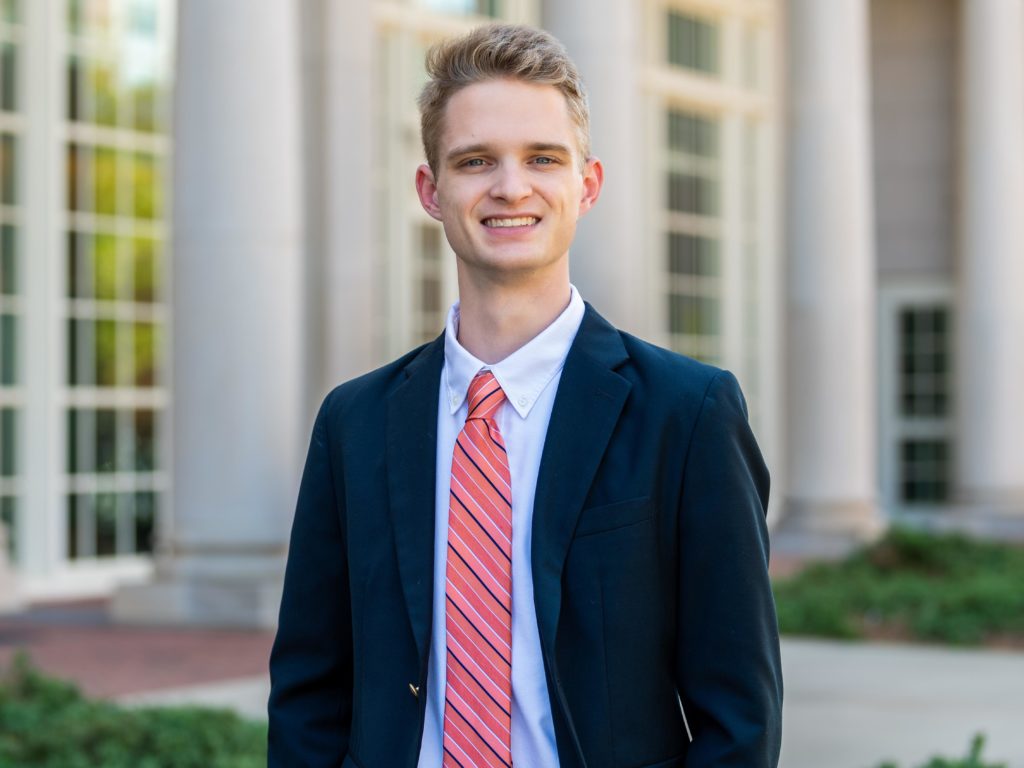PI: Chad G. Rose, PhD is an Assistant Professor in Mechanical Engineering. He holds a Bachelor’s Degree in Mechanical Engineering from Auburn University and a Master’s Degree and Ph.D. in Mechanical Engineering from Rice University. Dr. Rose’s primary research focus is on the design and control of robots to rehabilitate, assist, or augment human motor and sensory function.
E: chadgrose@auburn.edu
P: (334)-844-3401
Graduate Researchers
Rhet Hailey
My research interests are design and implement of rehabilitation focused robotics. Currently, I am working on the validation of robotic gravity compensation with Harmony Exoskeleton to encourage nerve growth while bypassing pathways potentially hidden by the force of overcoming gravity in stroke patients.
Also, I am designing a non-pharmaceutical intervention device to assist in the treatment of diabetic patients impaired with foot neuropathy. It has been shown that varying stimulations of the foot and shank elicit nerve growth and blood-flow. I aim to combine different systems of heat, vibrotactile sensation, and compression into a wearable robotic and evaluate these combined methods in neuropathic patients.
Fabian Schirmer
My research aims to synergize the dexterity of robots with human cognitive skills, particularly in assembly processes with high variability.
My research work involves two key components: a Planning Unit that semi-automatically generates assembly sequence plans (ASP) from CAD files, facilitating collaboration between humans and robots; and the Execution phase, which addresses real-time challenges such as human pose estimation, robot path planning, and obstacle avoidance. The communication setup employs light, text, and voice to convey the robot’s state and reasons for any state changes to the human.
Overall, the objective is to establish a seamless and adaptable collaboration between humans and robots in assembly tasks.

Zack Miller
My research revolves around simulating and measuring the kinetic and kinematic data of tremor to train Deep Neural Networks (DNNs) that can classify tremor severity. Then, this DNN classifier can be implemented onto an upper body exoskeleton to assist the wearer by suppressing the tremor.

Paxton Albright
My research aims to use human pose estimation to facilitate human interactions with autonomous and semi-autonomous systems. Classifying the results of human pose estimation will allow for a command set to be developed that will enable the human body to be used as a controller for these systems.

Peden Jones
I specialize in polymer additive manufacturing and primarily work in the WeBR and ME3D laboratories. My current research is a joint project between the Auburn History Department and the WeBR lab to rebuild a 16th century prosthetic hand from scans. The final version would be able to tell us how the original wearer would have used it over 500 years ago. In addition, the end result of the project means other historians or museums will be able to download and print their own copies of the prosthetic.

Carlos Campos Vargas
My research integrates modeling and simulation with material characterization to guide the development of prosthetic and exoskeleton devices for enhancing rehabilitation and supporting human mobility.

Mason Mathias
My research interests include the design, control, and practical integration of robotic rehabilitation systems into clinical settings. Through the use of low-cost systems to allow for access to broader population to integrated AI assistive models for improved therapist influence, I aim to integrate visual, auditory, and user feedback to enhance rehab procedures increasing usability for both clinicians and patients.
Undergraduate Researchers
Joshua Medler, BS ME ’26
Development of foot neuropathy testbed

Nate Hendrickson, BS ME ’28
Development of the AU Haptic Paddle

WeBR Alumni
Graduate Students:

David Edmondson
M.S. Mechanical Engineering ’25
Mechanical Performance of Additively Manufactured Soft Materials for Ultrasound and Biomechanical Simulation

Ann Ryan Johnston
M.S. Mechanical Engineering ’25
Exploring Mechanomyography as a Tool for Fatigue Monitoring in Neurorehabilitation
Avinash Baskaran
Ph.D. Mechanical Engineering ’25
Data-Driven Neuromechanical Modeling, Estimation, and Control for Hand-Assistive Robotic Interfaces
M.S. Mechanical Engineering ’22
Neuromuscular Insights for the Design and Control of Hand-Assistive Robots
Davis Poole
M.S. Mechanical Engineering ’25
Design and Validation of Cable-Driven Robots for Human Rehabilitation and Assistance

Patrick Neely
M.S. Mechanical Engineering ’25
Data Driven Approaches for Nonlinear System Identification and Control of Hardware in the Loop Systems

Chandler Stubbs
M.S. Mechanical Engineering ’23
Improving Semi-autonomous Unmanned Ground Vehicle Operator Performance via Haptics
Undergraduate Students:
- Marissa Lazenby, BS ME ’26, Development of the AU Haptic Paddle
- Anakin Natter, BS CS ’26, Implementation of Historical Prosthetic
- Jamison Hood, BS Mech. Eng ’24, Design and outreach of the AU haptic paddle
- Michaela Barksdale, BS Mechanical Engineering ’23, Development and control design of the AU haptic paddle
- Mark Roces, BS Mechanical Engineering ’22, Undergraduate Research Fellow, design of finger biomechanics testbed
- Rachel Long, BS Mechanical Engineering ’22, measurement of gait via IMU
- Loren Baugh, BS Mechanical Engineering ’22, implementation of flexible pneumatic polymer actuator
- Rizwan Halani, BS Mechanical Engineering ’21, Undergraduate Research Fellow, design and control of flexible pneumatic polymer actuator
- Brett Cranston, BS Mechanical Engineering ’21, Undergraduate Research Fellow, design and control of low-cost prosthetic hand





